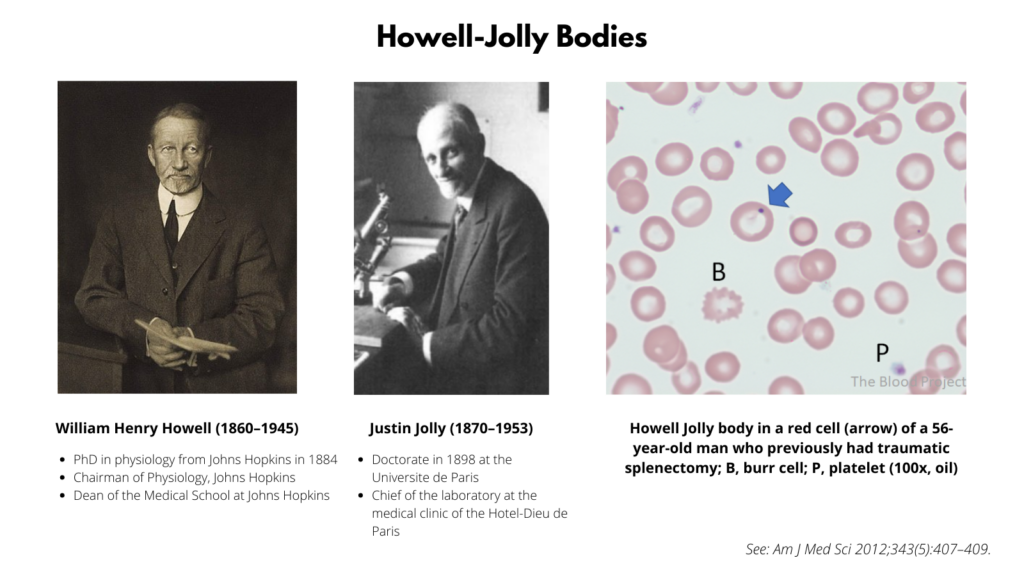The Howell-Jolly body is an eponym referring to small, round, basophilic (dark purple) nuclear remnants seen in red blood cells (RBCs) on a peripheral blood smear. Named after:
- William Henry Howell (1860–1945), an American physiologist and hematologist.
- First described these nuclear remnants at the end of the 19th century in studies involving cat embryos and cats.
- He correctly identified the nuclear remnants in erythrocytes but made some incorrect assumptions regarding how the red blood cells lose their nuclei and the fate of the extruded nuclei.
- Justin Marie Jolly (1870–1953), a French hematologist and professor of histology.
- Published his extensive observations about a decade later.
- Further refined understanding of nuclear extrusion and describing the fragmentation process that leads to nuclear remnants persisting within red cells.
They independently observed and described these inclusions in erythrocytes in the early 20th century, and their names were joined to form the eponym Howell-Jolly body.

To read the original Howell paper, click here.
